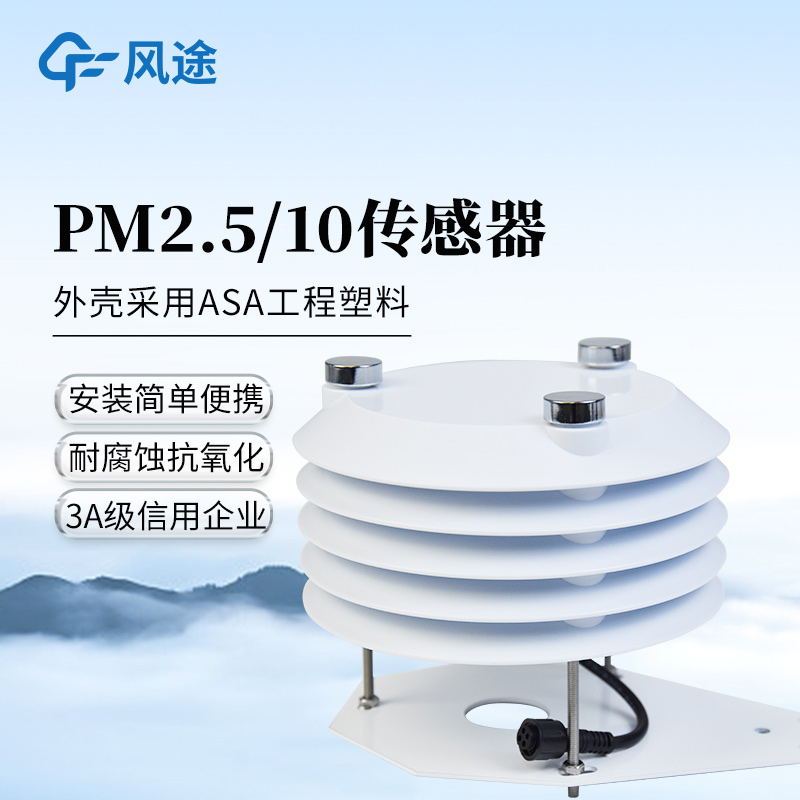Shandong Fengtu IOT Technology Co., Ltd
Sales Manager:Ms. Emily Wang
Cel,Whatsapp,Wechat:+86 15898932201
Email:info@fengtutec.com
Add:No. 155 Optoelectronic Industry Accelerator, Gaoxin District, Weifang, Shandong, China

Sales Manager:Ms. Emily Wang
Cel,Whatsapp,Wechat:+86 15898932201
Email:info@fengtutec.com
Add:No. 155 Optoelectronic Industry Accelerator, Gaoxin District, Weifang, Shandong, China
time:2025-05-08 09:02:26 source:Weather Station viewed:230 time
During the highway construction process, various types of pollution will be generated, among which PM pollution is particularly prominent. In the operations of earthwork filling and excavation, transportation and mixing of road construction materials, asphalt heating and mixing, paving during the pavement construction stage, as well as in the processes of lime soil mixing, stockpiling at the storage yard, material leakage during transportation, and dust generation on temporary roads, a large amount of particulate matter will be produced. The particulate matter mainly includes Total Suspended Particulate (TSP) and PM10.
PM2.5 and PM10 are key pollutant indicators. PM2.5 refers to particulate matter in the atmosphere with a diameter of 2.5 micrometers or less, which can easily enter the human lungs through the respiratory tract and directly pose a threat to human health. PM10 refers to particulate matter with a diameter of 10 micrometers or less, which will also have an adverse impact on air quality and the human respiratory tract. Long-term exposure to such a polluted environment will not only cause respiratory diseases among construction workers, but also affect the normal life of surrounding residents.
In order to effectively monitor PM pollution during highway construction, professional environmental monitoring sensors for highway construction can be selected, such as PM2.5 and PM10 sensors. These sensors use the principle of laser scattering and can accurately measure the concentrations of PM2.5 and PM10 in the air. The measurement results are intuitively displayed in a digital manner, enabling relevant personnel to keep track of the pollution situation at any time. Their measurement range is 0 - 1000 micrograms per cubic meter, which can meet the monitoring needs in different construction environments.
This sensor is equipped with a data storage function and can store data for the most recent 24 hours, making it convenient for subsequent review and analysis. It can also be connected to a computer. With the dedicated software on the PC side, the dynamic change curves of PM2.5 and PM10 can be displayed and stored in real time, providing strong support for the analysis of pollution trends.
Using such sensors in highway construction helps to detect PM pollution problems in a timely manner, so that targeted measures can be taken for treatment. This can reduce the impact of construction on the environment and human health.

Agricultural Weather Stations are small automatic weather stations specifically designed for agricultural ecological environments, aimed at monitoring the energy and material exchange between agricultural production environments and agricultural organisms.They can monitor various meteorological elem...
The Negative oxygen ion monitoring station, as the core quantitative tool of a "natural oxygen bar", relies on technological means to transform the abstract air quality into perceivable and verifiable scientific indicators, playing an important supporting role in many fields such as ecolog...
Visibility is a crucial indicator in our daily lives and various production activities. From the safe takeoff and landing of aircraft in the aviation field to the navigation of ships in the vast ocean; from the smooth passage of vehicles on highways to the precise analysis of weather phenomena in me...
In the field of road traffic, adverse weather conditions are like invisible "traffic killers", posing a huge threat to safe operations. Road surface water accumulation, thick snow, excessive rain and snowfall, or the frequent occurrence of extreme weather such as dense fog, thick fog, sand...